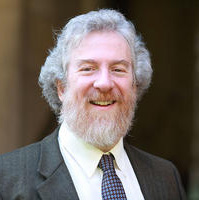Avodah: In the Service of God

“And God said to Moses, Say to Pharoah: ‘Thus says Adonai—Let My people go that they may serve Me (ya’avduni).'” (Exod. 8: 16)
The Hebrew word avodah has a powerful history, embracing domestic service (Jacob for Laban) and enslavement (Israelites in Egypt), as well as ritual, sacrifice, and prayer. Avodah is often translated with the complex and highly ambiguous English word service, which has implications in the United States of military service, servitude, and religious gatherings.
The concept of a relationship with God that is based upon service is challenging to our thinking, and has been explored throughout many eras. In 5763, in his comments to Parashat Behar, Rabbi Matthew Berkowitz, director of Israel Programs at JTS, wrote:
Yehudah HaLevi, a prolific poet of the Golden Age of Spain writes, ‘The slaves of time—slaves of slaves are they; the servant of God—that individual alone is free, (Eved Adonai hu levad chofshi). And so when every human seeks his portion—my soul says, “My portion is the Lord’s.”
May each of us have the insight and gumption of Yehudah HaLevi—understanding that our freedom derives from the precious and treasured boundaries with which God has circumscribed us. From within the confines of Torah, life is always the richer.
Hazzan Jack Kessler, a graduate of JTS, has composed a beautiful original setting for this poem, which can be heard here.
Recall the old story of a young child encountered by the hazzan late one morning, as the boy stares at a list of gold-lettered names on a beautiful memorial board. Placing a comforting hand on the boy’s shoulder, the hazzan gently explains, “These are the names of temple members who died in the service.” The child stands in shared silence for a moment, and then asks the obvious question: “Was that service for Rosh Hashanah or Yom Kippur?”
To the extent that people still laugh (or chuckle), there is perhaps a recognition that, for some people (perhaps more than we would like to imagine), there is a feeling that “they’re dying at services.”
Our Movement has two strong sources of religious and spiritual power. First, the hundreds of synagogues filled weekly by (often) hundreds of people drawn by the power of the experience; the wisdom, joy, and love in the teachings of their rabbi and hazzan; and the warmth of their community. Second, we are aware of new approaches—of new and emerging communities—that are gathering and exciting crowds of young (and not so young people). These are not small things, and we give thanks for them.
A newer sound of the cantorate can be heard in this clip from JTS’s 117th Commencement Exercises, while a sense of abiding tradition of divine service is captured in this extract (Ata Yodea) from the High Holiday liturgy by Hazzan Jack Mendelson, beloved teacher of hazzanut at JTS.
The Torah tells us the People brought offerings to Moses in the desert to support the service (avodah) of the Tent of Meeting (Num. 7:5). We see that, from the earliest times, funds and resources were needed to sustain and beautify the service of God. These parallel and crucial needs of beautification and sustenance remain vital for even the emerging generations of today. The Talmud (Ta’anit 2a and elsewhere), facing the reality of the destruction of the Temple service (avodah), innovates the radical concept of avodah shebalev (service of the heart and mind). This idea was refined over millennia, and is still “in process.”
Can we follow in the footsteps of the congregations, rabbis, and hazzanim who serve God faithfully and full heartedly, engaging and exciting the spirits and minds of those who participate with them? There is such great beauty in our sacred texts and poetry, in the music—ancient and modern—of our People. Our work together as rabbis, hazzanim, synagogue leaders, and daveners will bring about a generation that will not “get” the story of the child and the memorial board. For they will love to come together to serve God with joy.
It has been my honor to open this conversation with the profound hope that, in the coming months, this series of teachings, melodies, and explorations will become a source of inspiration and solutions



